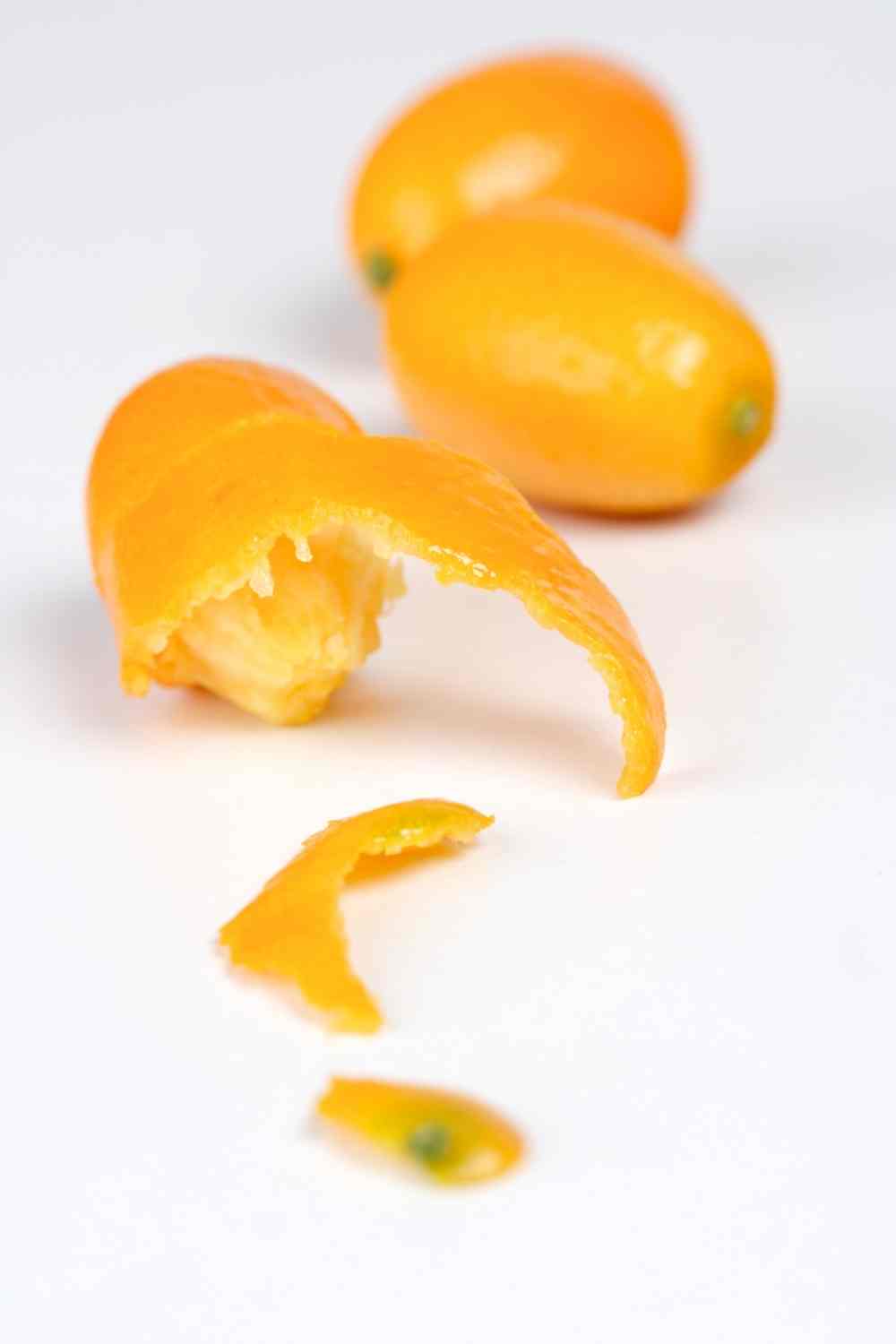If you've ever seen a basket of bright, fresh kumquats at a farmer's market, you could mistake them for young oranges at first sight. But wait, these little fruits can be eaten whole, skin and all. The highly tart taste of a kumquat will make your lips pucker after just one mouthful. The tiniest members of the citrus family, these petite oval-shaped fruits have a pleasant edible peel that makes them excellent for a batch of homemade marmalade.

What Are Kumquats and How Do You Use Them?
Kumquats are little citrus fruits that look much like oranges. They grow on little kumquat trees and belong to the Fortunella genus of the Rutaceae plant family. The kumquat's skin is thin and delicious, with a sour flesh that allows the fruit to be eaten whole. In North America, the bulk of kumquats is cultivated in California and Florida, with the peak season being between January and March.
What Do Kumquats Look Like and How Do They Taste?
Kumquats are distinguished by their small size and vibrant orange peel. Because they have a thin, sweet edible skin with no bitter pith, they are one of the few citrus fruits that do not need peeling. The sour flesh of kumquats is best eaten with the skins to balance out the acidic tastes. They contain little edible seeds that may either be eaten or thrown away.
Kumquats come in seven different varieties.
- Meiwa Kumquats (or round kumquats): These little fruits have a golden orange-colored kumquat peel and are spherical in form. Meiwa kumquats are much sweeter than other kumquat cultivars.
- Nagami Kumquats (sometimes known as oval kumquats) is a popular kumquat cultivar in the United States. The vivid orange peel and sweet-tart taste of these oblong-shaped fruits make them ideal for marmalades and jellies.
- A Nagami hybrid. It has a tangy taste and luscious flesh.
- The Jiangsu Kumquat is a bell-shaped kumquat with a milder taste than other types.
- The Fukushu Kumquat is a cross between a kumquat and a mandarin. It's a little bigger than a regular kumquat, with a flattened circular form and smooth peel that's perfect for candying.
- Mandarinquat: A hybrid of the kumquat and the mandarin. Oblong in form and resembling little tangelos in look.
- Limequat is a hybrid of key lime and kumquat. The rind is smooth and light yellow in color, and it has a tart flavor.
Kumquats: How to Eat Them
Kumquats may be eaten whole—skin, seeds, and all—due to their sweet exterior and acidic meat. Kumquats are also often used in marmalade, jellies, and baking. Kumquats may be used in a variety of ways to give your meals a citrus kick: Slicing them thinly and adding a tart touch to salads or making chutney to serve with savory foods like duck, chicken, or shellfish is a good idea. Kumquats are turned into a tea with honey and ginger in Chinese cuisine to help treat colds and flu.

8 Ways to Use Kumquats in the Kitchen
These kumquat dishes can give any meal a boost of flavor.
- Kumquat marmalade is made by combining finely diced kumquats and their skins with sugar and boiling until thickened. This vibrant and zesty marmalade pairs beautifully with cheeses like Comté and goat cheese for breakfast.
- Candied kumquats: To make candied kumquats, mix chopped kumquats with sugar and water and heat until the peels become transparent. Serve with salads, pork, chicken, or desserts. You may use the syrup base as a cocktail mixer if you save it.
- Kumquats preserved in sugar and honey: To increase the shelf life of kumquats, consider preserving the entire fruit in a sugar and honey combination. Preserves may be served with roasted chicken or spooned over cheese or ice cream.
- Kumquat chutney: Kumquats' tart and sweet tastes complement apricots and cranberries in this chutney. Chutney may be used to liven up a grilled cheese sandwich or served with chicken and fish. Here's how to make chutney.
- Fresh orange juice, sliced kumquats, rice wine, soy sauce, garlic, olive oil, and sugar are combined to produce an Asian marinade that goes great with fish or fowl.
- Fruit salads: For a vibrant salad, combine sliced kumquats with other citrus fruits like grapefruit, oranges, and blood oranges, as well as mint leaves and honey.
- Winter Salads: Kumquats' tartness adds a refreshing note to winter salads. Try slicing or quartering them and tossing them with endives, frisée, or fennel in a simple vinaigrette.
- Bundt Cake: In a basic cake mix, stir in chopped kumquats and candied ginger. Bake in a bundt pan and top with an orange glaze for a festive look.




